Last updated: May 30, 2024
Article
The Sierra Nevada Monitor: Spring 2024
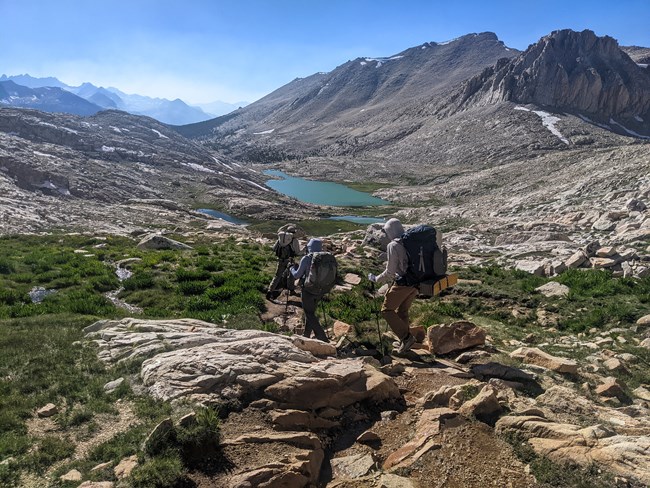
Shannon Lavelle, Scientist-in-Parks Program
A Network in Transition: Reflections on the Sierra Nevada Network Inventory & Monitoring Program Past, Present, and Future

NPS / Emma Kahle
The only way to understand the world as something other than a tale of loss is to see it as a tale of change.
–Daniel Mason, from The North WoodsTwenty-five years ago we designed this program for you: the managers and scientists of today. We set out to track key ecosystem drivers, with a focus on those that were challenging to get to in such wild places. Our vital signs were chosen to provide information about changes in water chemistry, river flows, high-elevation forests, wetlands, and birds across the park landscapes. At the time, the study designs we implemented (Generalized Random-Tesselation Stratification, or GRTS, and rotating panel designs) were relatively new, and some were skeptical that they would work. Twenty-five years later, we know that they do. What has emerged is a powerful network of sample points that can be built upon to help answer questions that two decades ago hadn’t yet been asked, and analytical frameworks to tease out their stories.
What are these data telling us? We know that there are bird populations showing declines in the southern Sierra, yet holding strong farther north. We’ve documented that when a primary food source falters, Clark’s nutcrackers will shift their preferences – for instance, from the seeds of whitebark pine to those of foxtail pine. We are learning how fires impact birds over time, a story that is just emerging. Once distant threats to high-elevation pines have arrived and our data are informing restoration planning for the recently listed whitebark pine. We are learning how algal blooms impact high-elevation lakes, and how lakes in the Sierra compare to those in the Rocky Mountains. Through fire, flood, and pandemic we’ve learned that our sample designs are robust to disruption.
The original twelve inventories have become integral to our understanding of park ecosystems—such that we don’t think twice about pulling up maps of vegetation, water bodies, soils, or geology. Now second-generation inventories are helping to address immediate, urgent questions about species and their distribution, providing vital support to parks as the pace of change accelerates.
Born of necessity, the network concept has proven to be a powerful ‘force multiplier.’ One of 32 networks across the country, we have the full strength of the national program to draw upon as the Sierra Nevada Network (SIEN) staff undergoes unprecedented turnover. This summer most data collection has been paused to fill key positions and plan for sustaining this work into the future. We’ll not do this alone, but continue to draw on the park, USGS, university, and NGO partners who have been part of this journey from the very beginning.
I am in awe of what this network has grown into and it has been a privilege to be a part of it. I’m confident that what we’ve built together is sturdy and will continue to deepen understanding of these systems in the years ahead. But what I am most proud of, and what gives me the most hope for the future, is the young scientists who have poured their energy, expertise, and unflagging enthusiasm into this work. At the science symposium this spring, I listened as the next generation spoke. What I heard was not despair or discouragement, but a fierce dedication to showing up, working hard, and meeting the challenges that are coming head-on. Yes, change can feel like loss; but every day I’m reminded that people and places are resilient, and we owe it to the managers, scientists and visitors of the future to keep telling the stories of change.
– Sylvia Haultain, Network Program Manager 2015 – 2024, retired from the National Park Service on April 30 and can be found exploring and celebrating the Sierran landscapes she calls home.
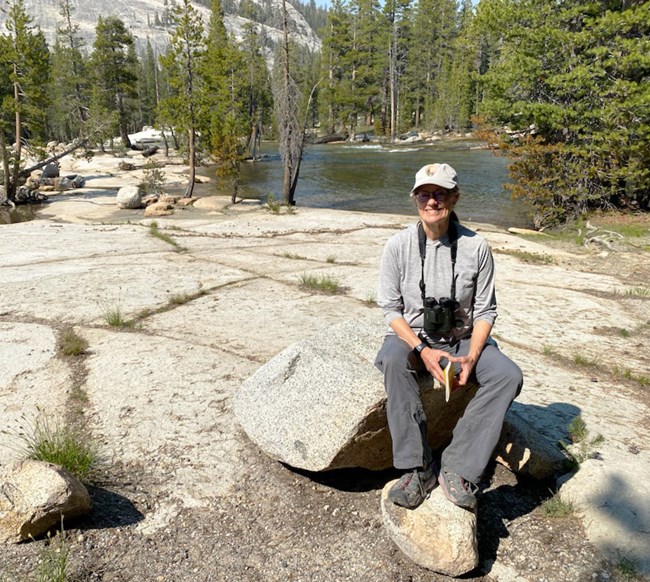
Sylvia skillfully led the network through challenging times, including the pandemic, two years in a row of large, high-severity wildfires that killed an estimated 14–19 percent of all large sequoias, and a winter of one atmospheric river after another, bringing record snowpack and runoff. She led us through these epic years with safety and employee well-being always at the core of our conversations and decisions.
Sylvia contributed to Inventory & Monitoring projects even prior to when she began formally working for SIEN. While working for Sequoia and Kings Canyon National Parks' (SEKI's) Research Office, she worked with a small team that conducted the first systematic floristic inventory for the Sierra Nevada parks. During her 18 years as SEKI's plant ecologist (1997–2015), she led development of the parks' vegetation map and supervised plant surveys at SEKI and Devils Postpile National Monument. She contributed to development of the SIEN Wetland Ecological Integrity protocol.
Other highlights from Sylvia's SEKI Plant Ecologist years include: monitoring stock use and meadow condition; conducting special status plant surveys; and contributing to the Wilderness Stewardship Plan, Natural Resource Condition Assessment, and Resource Stewardship Strategy. And in her years of service to these parks, she has mentored and influenced many seasonal staff who have gone on to work in science and land management programs across the country.
Sylvia has a deep knowledge of and dedication to the Sierra Nevada, and these qualities are evident to anyone lucky enough to work on resource projects with her or better yet, go botanizing, birding, or hiking with her. We look forward to seeing Sylvia out enjoying SIEN parks!
Farewell
While the network's staffing has been relatively stable over the years, a combination of retirements and new job opportunities has resulted in a big turnover of staff within a short period of time. The following articles bid farewell to: Andi Heard, Physical Scientist, and Kristin Weikel, Logistics Coordinator. Sylvia Haultain, Program Manager (retired April 30), wrote this newsletter's leading article giving her hopeful perspectives for the network's path forward. Linda Mutch, Science Communication Specialist (retiring May 31) wrote a farewell article sharing her gratitude for the roles she has been able to play and for the work of so many NPS staff and partners to establish and implement inventory & monitoring programs.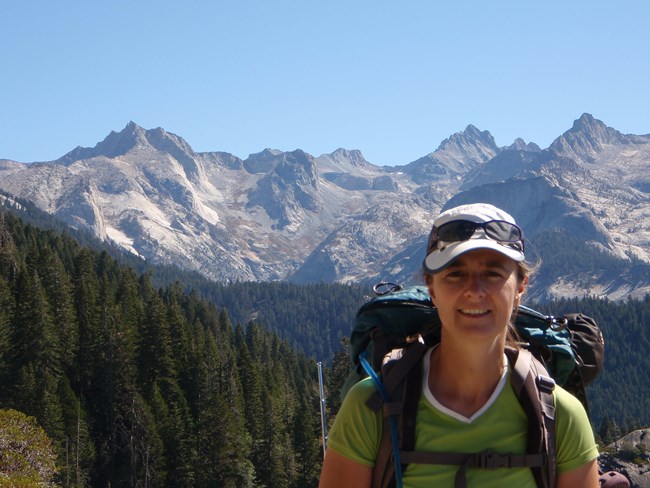
Andi Heard
In October 2023, Sierra Nevada Network (SIEN) Physical Scientist Andi Heard began a one-year detail as project manager for the Inventories Program, under the NPS Inventory & Monitoring Division. Recently, Andi accepted a permanent position in this role, and she started on May 19th. She works with parks and networks that have received biological inventory funds to guide planning and implementation of species inventories.
Andi started working for SIEN in 2004 and was the lead for lake and river hydrology projects, and more recently, wetland groundwater monitoring as well. Even earlier, while pursuing a MS in Watershed Science at Colorado State University, Andi worked with SIEN through a cooperative agreement, assisting with the network’s vital signs monitoring plan. She has been with the network through the early stages of planning and vital signs selection. She developed our longest-running protocol, lake monitoring, and implemented it by 2008.
When Andi pursued a PhD in Soil and Water Science at University of California, Riverside starting in 2010, she applied her graduate research on assessing nitrogen in Sierra Nevada lakes to evaluate nitrogen levels in 75 lakes that SIEN monitors. Her work highlighted the value of monitoring data to research projects, and illustrated how research projects can provide insights and application for monitoring. See the following web articles for brief summaries of her research publications:
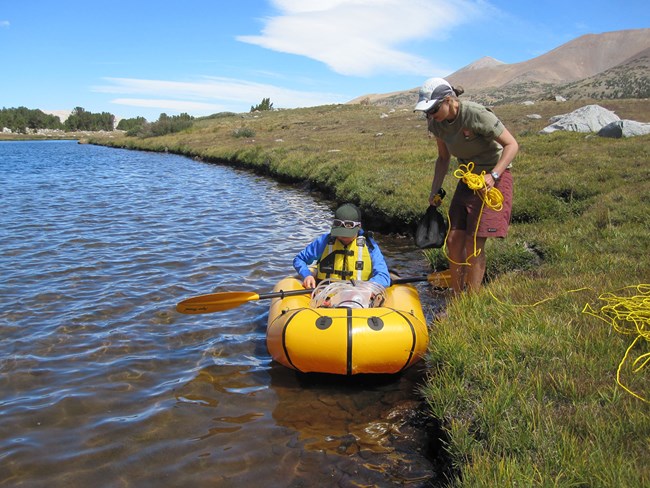
SIEN will miss Andi’s skill as a project lead, her knowledge and enthusiasm about water chemistry, hydrology, and climate, and the positive attitude and wisdom she brings to our program. The program has benefitted from Andi's years of local expertise in the Sierra and her strong organizational and analytical skills. Andi led numerous work groups of park staff and cooperators who contributed to protocol development. She has also been a role model for field safety, getting trained to teach operational leadership and playing a lead role in our field crew safety training. She has thoughtfully mentored field staff and interns, participated in communication projects, such as videos and story maps, and was lead author on a Frontiers for Young Minds article about nitrogen and lakes. She enjoys presenting what we are learning about lakes and river hydrology to a variety of public, park management, and scientific audiences.
We wish Andi all the best in her new position! We are grateful we will still get to work with her on inventory projects as she is the lead project manager for many of the species inventories in SIEN parks. She plans to live locally so we still get to see her at our SIEN office, in town, or on park trails!
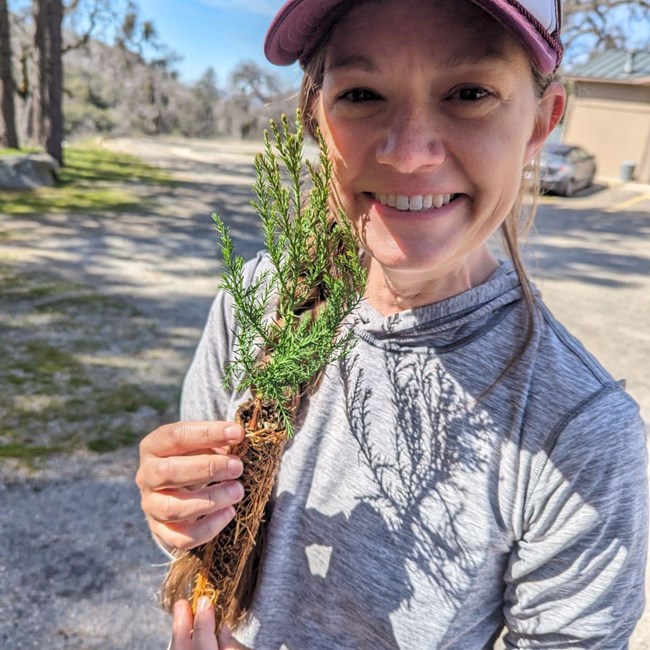
Kristin Weikel
Kristin Weikel, who served as our Logistics Coordinator 2017–2023, started a job with American Forests in January as the Southern Sierra Reforestation Coordinator. In her new role, Kristin coordinates post-fire restoration and seed collection efforts. She works closely with the Southern California Reforestation Manager to support climate-informed restoration outcomes through adaptive management strategy and monitoring design.
We will greatly miss Kristin’s stellar planning and organizational skills (nicknamed the Solutions Specialist by SIEN’s Program Manager Sylvia Haultain), and her ability to develop plans A, B, C, and more during fires, extreme weather events, and other times where great flexibility was needed. We valued her in-depth knowledge of these parks and her ability to work well with park staff to assist us with food caches, route-planning, and other logistical needs. She played an important role helping keep wilderness field crews safe through participating in planning, preparations, and crew tracking. Kristin’s strong field skills also enabled her to assist occasionally with lakes and forests monitoring. We'll really miss her smile and cheery disposition, even when times were challenging. Thank you, Kristin, and happy trails, back to the forests you love.

Linda Mutch: From Program Coordinating to Science Communicating
It has been such a journey, from being program coordinator for the first 10 years of the Sierra Nevada Inventory & Monitoring Network (SIEN) to the science communication specialist the past 13 years. In that first decade (2001–2010), I enjoyed seeing biological inventories provide new information about high-priority species, working with network and park staff and cooperators to prioritize vital signs, seeing the first monitoring protocols developed and start to be implemented, and working closely with so many dedicated SIEN and park staff, USGS scientists, and other partners who helped make it all possible.
From my program coordinator role, I remain grateful to the many people who served on our science committee, protocol work groups, and Board of Directors. Despite all their other responsibilities, they kept showing up at meetings in windowless conference rooms in Fresno, or on conference calls, to guide monitoring plan and protocol development, and share their wisdom and deep knowledge of the Sierran parks. It has been satisfying seeing the fruition of that work in the form of awesome field crews collecting data each year; datasets that get more valuable as time goes on; and publications, presentations, and web articles that communicate what we are learning.
In the science communication role, I worked at least half of my time with SIEN but also was shared with other networks (Klamath early on, and in recent years, Mojave Desert) as well as with the Sequoia & Kings Canyon National Parks (SEKI) creative media team (web page support), the SEKI Fire Management Office in fire information details, and the Northern Rockies Fire Science Network. While it can be challenging balancing time for different programs, I am grateful for the support and the opportunity to work with a variety of people and projects.
I will so miss the science communication community within the Inventory & Monitoring Division (IMD) and beyond, and all my wonderful network and park colleagues. The monthly “sci comm” calls and periodic virtual or in-person trainings have offered information-sharing opportunities and support among communicators in similar roles across IMD networks, other Natural Resource Stewardship and Science divisions, science learning centers, and parks. I thank those who took leadership roles to keep these connections going and am grateful to all for things I have learned, projects we have worked on together, and so much inspiration.
While looking forward to retirement, I will always remember and cherish the people I have worked with. May you carry on, taking care of each other and the places you love.
– Linda Mutch (retired May 31)
Welcome, New Staff!

Rachel Wolstenholme, Acting Program Manager
Rachel Wolstenholme is the Acting Program Manager for the Sierra Nevada Network April 29 – August 16. Rachel has worked as a Biologist for the NPS and non-profit organizations for over 25 years. Her focus has been on endangered species recovery and includes work in Yellowstone, Glacier, Pinnacles, and Channel Islands national parks. Since 2020, she has been serving as our regional wildlife biologist. Rachel's first role with the NPS was leading a dynamic team at Pinnacles National Park focused on California Condor recovery. Her projects have ranged from gray wolf monitoring to island fox recovery, as well as wolverine and spotted owl surveys. She conducted water quality and quantity monitoring for several years in Wyoming's Wind River Range. Rachel’s M.S. degree from the University of Montana focused on human-wolf interactions in a rural ranching community. Along with her focus on finding common ground and endangered species recovery, she believes in strong collaboration with universities and partnering with NGOs. In her free time you’ll find Rachel enjoying the trails of our parks.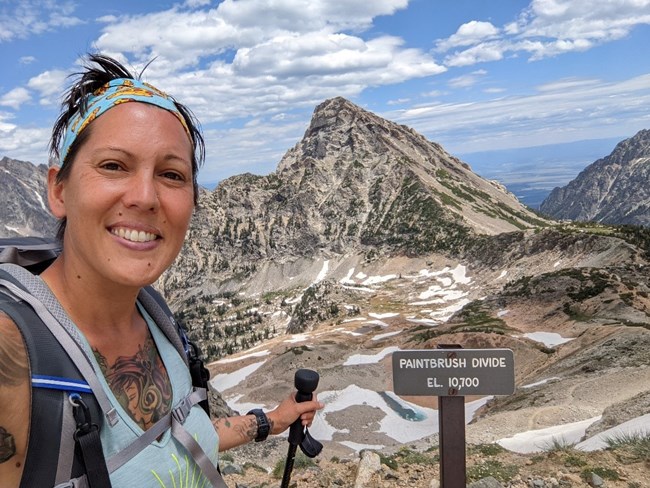
Christina Appleby, Data Intern
We are excited to introduce our first data science Scientists-in-Parks (SIP) intern, Christina Appleby! She started work at the end of February and is assisting both Sierra Nevada and North Coast and Cascades Networks in various GIS, data management, and data publication projects for the coming year. Christina shares her professional and personal interests below:
My bachelor's degree is in environmental and natural resource economics, which I chose because I love analyzing data and am interested in natural resources management. While pursuing my undergraduate degree, I was a Coastal Fellow at University of Rhode Island, and the research project I was working on piqued my interest in GIS and remote sensing. Now I'm pursuing my M.S. in Geographic Information Science at Idaho State University (professional/non-thesis), and I really enjoy not only how much I'm learning about GIS, but also how to use GIS in different disciplines related to natural resources management. In 2014, I through-hiked the Appalachian Trail, and it was an amazing experience. My hobbies are hiking, backpacking, fishing, and trail running.
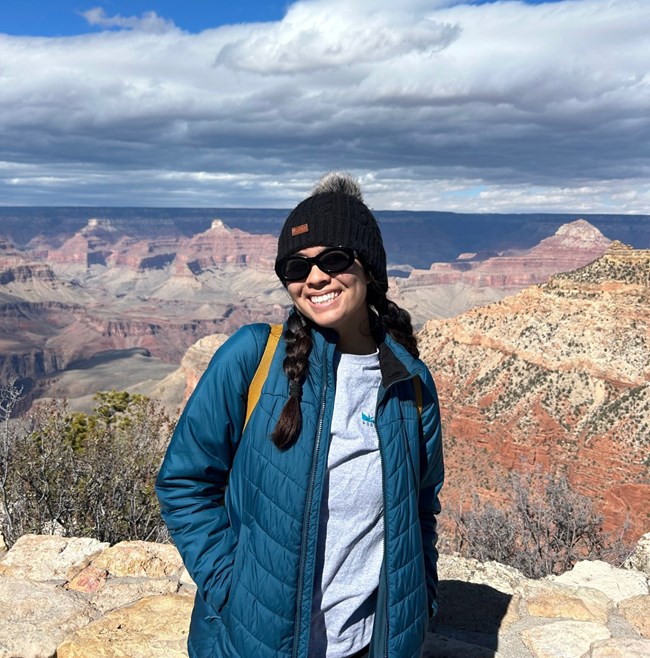
Virginia Javier, Logistics Coordinator
Virginia Javier is the new Logistics Coordinator for the Sierra Nevada Network for the field season from May through October. She graduated in May 2024, receiving a B.S. degree in Natural Resources with an emphasis in Rangeland Management from the University of Arizona. While an undergrad, Virginia was a Weed Warriors VIP, as well as a Scientists-in-Parks intern at Cabrillo National Monument, which inspired her to work in public service after graduation. Outside of work, she enjoys cooking, baking, hiking, and going to concerts/music festivals.

Former Park Ecologist Now with Natural Sounds and Night Skies Program
Need help with natural sounds or night skies topics or projects?
Erik Meyer, formerly an ecologist at Sequoia and Kings Canyon National Parks (SEKI), recently moved on after 15 years at the parks. Erik started at SEKI as a lead field technician and spent the last 8 years as a program manager in the Physical Sciences Branch. In May 2023, Erik began working with the Natural Sounds and Night Skies Division (NSNSD). In his new role, he supports parks throughout Unified Regions 8,9,10 & 12 (formerly PWR) on a variety of natural sounds and night skies projects. He is still stationed at SEKI and works with PWR parks virtually or on-site.
Noise and light pollution threaten the natural, cultural and wilderness values of many NPS units. In response, NSNSD aids in collecting baseline data for ambient acoustic and night sky quality and identifies source specific impacts and engineered solutions to reduce, mitigate or prevent anthropogenic noise and excessive light in and around parks and national trails. NSNSD provides bioacoustics support, utilizing artificial intelligence methods that scan acoustic files for vocalizing species. NSNSD assists with park planning, compliance, and external project reviews to help parks reduce impacts from noise and light pollution to natural and cultural resources and visitor enjoyment. Finally, the NSNSD Overflights Program provides assistance related to air tour management, airspace design, military overflights, airport capacity enhancement projects, and park specific administrative flights.
Erik is most interested in the ecological effects of noise and light pollution, as well as emerging acoustic methods that monitor the impacts of landscape scale changes. Any park within the region can request help for any NSNSD topics through the Integrated Resource Management Applications (IRMA) and the technical assistance request (STAR) system. Parks can first reach out by sending an Email to Erik Meyer.
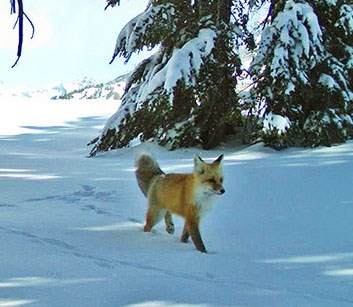
NPS, Yosemite National Park
Park-specific Needs a Priority in Inventory Program
As the NPS Inventory Program notes on its web page:With the original round of 12 basic inventories largely complete, the Inventory Program now funds projects driven by and tailored to park needs. The focus is currently on the collection of new data on species occurrence, abundance, or distribution to inform park management decisions and planning. Once each year, park or network staff submit proposals for review and selection by a regional panel.
Most inventory projects are completed in partnership with cooperators. Each inventory produces a report and dataset(s), as well as any other park-specific need. These products are designed to be used in park decision-making. Following is a table summarizing the status of inventories in Sierra Nevada Network parks through fiscal year 2024:
| Number | Park | Project short name | May 2024 Status |
|---|---|---|---|
| 1 | SEKI | Post-fire fisher | In Progress |
| 2 | SEKI | Red fox | Awarded |
| 3 | SEKI | Sequoia groves | In Progress |
| 4 | SEKI | Pacific fisher | In Progress |
| 5 | SEKI/YOSE | Yellow-legged frogs | In Progress |
| 6 | SEKI | KNP Fire mixed conifer forest | In Progress |
| 7 | SEKI | Spotted owl | In Progress |
| 8 | SEKI/YOSE | Fisher habitat | In Progress |
| 9 | YOSE | River otters | Awarded |
| 10 | YOSE | White pine blister rust | In Progress |
| 11 | YOSE | Great grey owl prey | In Progress |
| 12 | DEPO | Owls and bats | Completed - report available |
Monitoring Project Updates
Bird Monitoring 2024: A Delightfully ‘Average’ Year
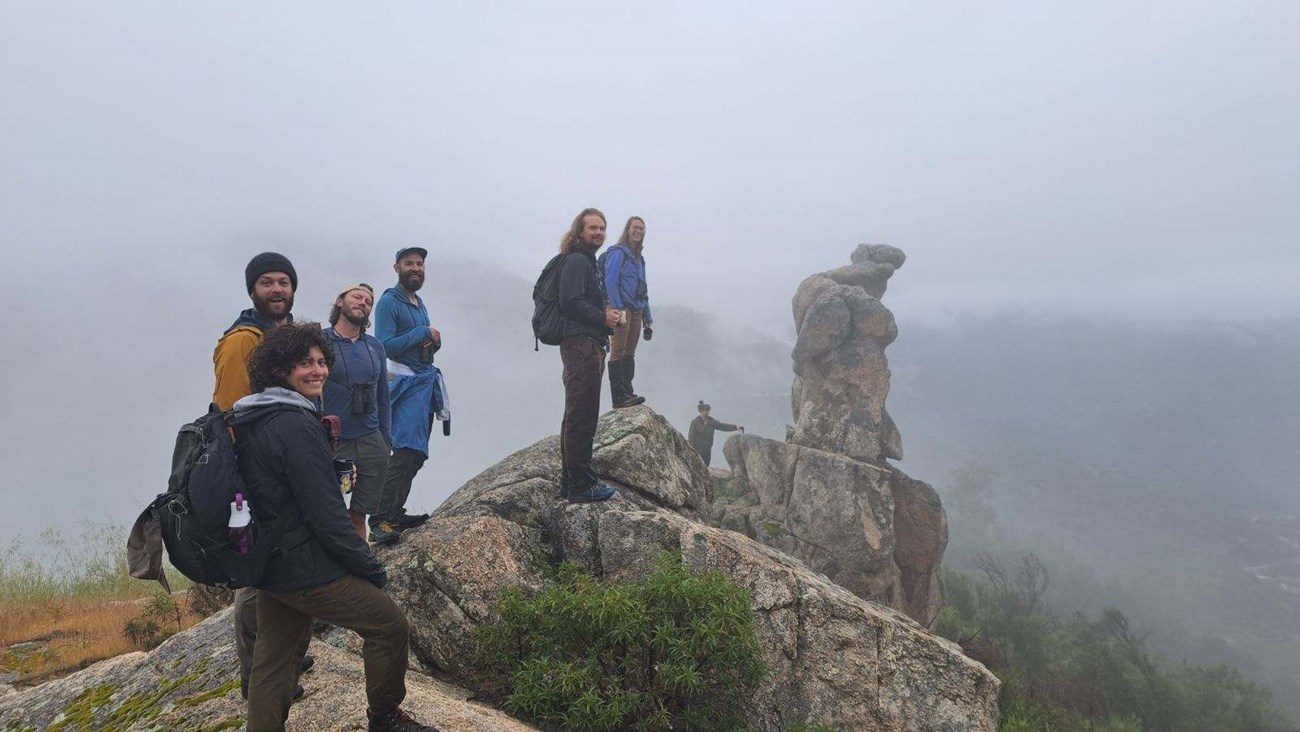
Lexine Schroeder, The Institute for Bird Populations
Despite the turnover in Sierra Nevada Network staff, our partners at the Institute for Bird Populations (IBP) are all in to conduct field work in the Sierra Nevada Network this year. Lee Bryant, returning for her fourth season censusing birds in Sequoia and Kings Canyon National Parks (SEKI), spent the winter developing tour itineraries and planning for a delightfully ‘average’ year. She is determined to reach the high elevation sites that were buried in snow in 2023! In her new role as staff biologist with IBP, she is also supporting a crew conducting nest surveys in post-burn montane forests of SEKI. She and Cameron Tomkins-Cook, skilled birder and experienced through-hiker, make up the SEKI crew. We are delighted to have Willy Lebowitz back for his second season, as the siren call of the Sierra proved hard to ignore. He and Eric Smith, long-time Yosemite (YOSE) ranger and avid birder, will be working (and playing music) together in YOSE. Quinn McMahon, previous YOSE crew lead and now SEKI Wilderness Ranger, made time before his season at Bench Lake to co-lead field training. Along with LeConte Ranger Amanda Guenther, Quinn will also help conduct bird surveys on an early trip into Tehipite Valley.
After being shut out by snow in 2023, IBP will return to Devils Postpile National Monument, where long-term staff Rodney Siegel, Bob Wilkerson, and Dayna Mauer will lend their considerable skills to the Sierra Nevada sampling. When the last transect is read, the third rotation of our panel design will be complete, setting up 2025 for synthesis and analysis of a 12-season dataset spanning 14 years. As analyses of the 2011-2019 bird montoring data detected declines in a number of species following several ‘mega-drought’ years (especially in the southern part of the range), we’re curious to see how bird populations have responded to the recent fire and flood events (2021–2023).
Exploring High Elevation Forest Mortality in Sierra National Parks: 2023 Field Season Recap
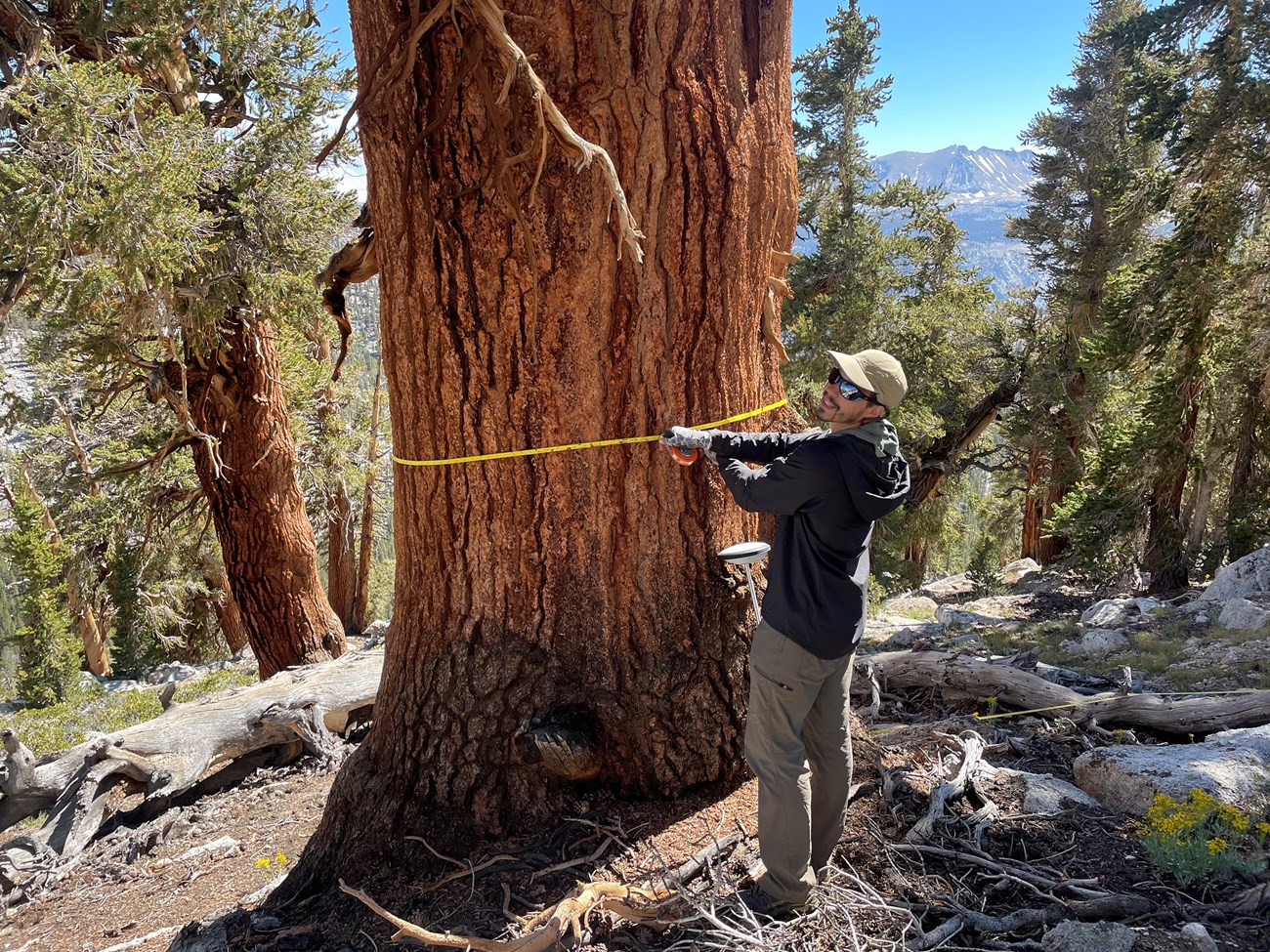
Zoe Klein, Great Basin Institute
Whitebark pine and foxtail pine are foundational species of the high Sierra. In the national parks of the southern Sierra Nevada, these long-lived species grow at high elevations and weather change slowly over the centuries. Yet, recent observations of dead and dying white pines have caused concern that this may be shifting. To investigate the extent and causes of high-elevation white pine mortality, SIEN partnered with USGS and USFS to launch a pilot study in 2023.
During the 2023 field season, SIEN Ecologist Erika Blomdahl and the forest field crew made significant progress:
-
Study design: a sampling design and field protocol were developed for data collection efforts to be completed over two field seasons.
-
Field campaign launch: a crew of three highly skilled field technicians (Zoe Klein, Alex Brown, and Natalie Perry) was trained and commenced data collection in remote wilderness areas of SEKI and YOSE.
-
Data collection: we collected data from 21 backcountry plots, including crown health measurements (n=1243 white pines) and detailed examinations of recently dead trees (n=93).
-
Planning for the future: trips to visit the remaining plots were mapped out and lessons learned were documented.
Over the next few years, the Sierra Nevada I&M Network and our partners will complete data collection and analysis. Our goal is to validate remote sensing tools to help estimate the extent of high-elevation white pine mortality in our parks, and to better understand the causes of tree mortality in these iconic forests.
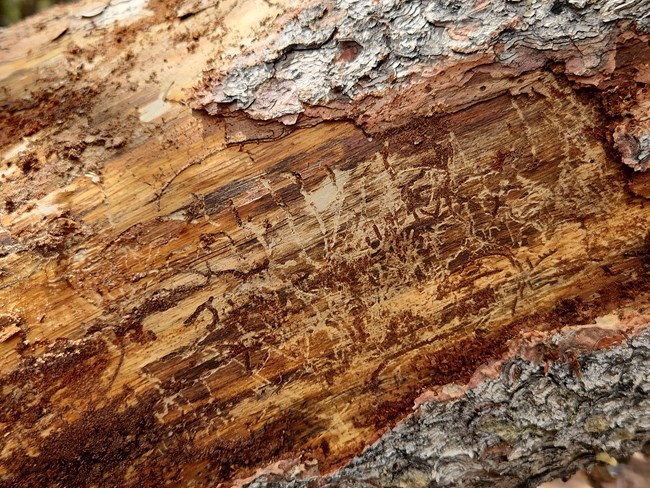
Sierra Nevada Network Forest Crew, 2023.
Over the next few years, the Sierra Nevada I&M Network and our partners will complete data collection and analysis. Our goal is to validate remote sensing tools to help estimate the extent of high-elevation white pine mortality in our parks, and to better understand the causes of tree mortality in these iconic forests.
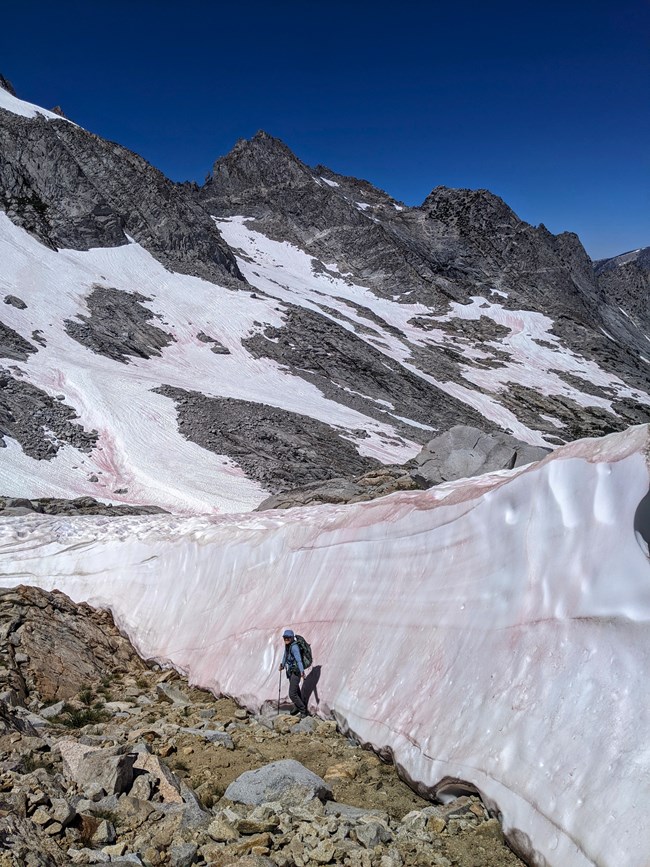
Shannon Lavelle, Scientists-in-Parks Program
Lake Monitoring Crews Complete Fifteenth Year of Data Collection
Lake crews collected lake monitoring data from 22 of the 25 Panel One and Five sites and monthly samples from the index sites July–September, 2023, completing the fifteenth year of data collection for this program. Crews did not reach all planned sites due to access issues from the 2022-23 winter storms, which included high runoff from persistent snowpack and closed roads and trailheads. Lake crew members Anna Shampain, Parker Land, and Shannon Lavelle at Sequoia and Kings Canyon National Parks (SEKI), and Michelle Gilmore and Sean Smith at Yosemite National Park (YOSE) did an excellent job collecting field data safely in a challenging year. In addition to monitoring water chemistry and documenting amphibian observations, these crews were also trained to identify harmful algal blooms so that they could document these, if present, at higher elevations.In January 2023, Andi Heard, physical scientist, and Sarah Wakamiya, data manager, completed quality assurance/quality control review of the lakes data (2008-2020) and uploaded these data to the NPS Water Quality Portal, making them available for download.
2024 is a scheduled "rest" year for lake monitoring. Rest years entail visiting only the annual panel of lake monitoring sites. SIEN and the YOSE Physical Sciences and Landscape Ecology Program are working together to stand up the rest year in absence of a SIEN project lead this year.
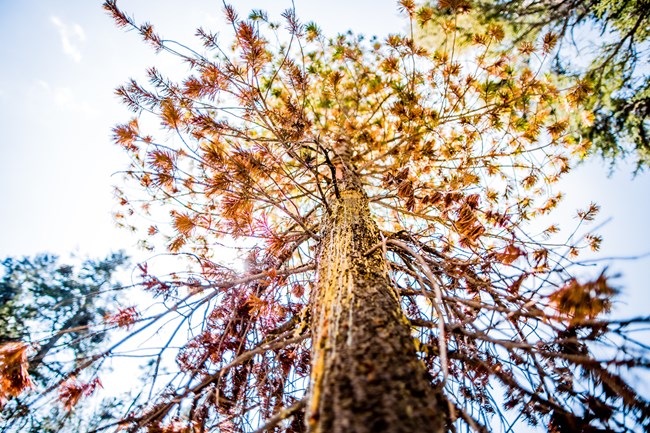
Photo by: Clayton Boyd
Focal Condition Assessment Documents Sugar Pine Decline
Cooperators from the University of California–Berkeley, used U.S. Forest Service Forest Inventory and Analysis data, vital rate models, and integral projection models to evaluate the status of sugar pine (Pinus lambertiana) across the majority of the species’ range. See the Foster et al. paper in the publications section below for detailed results.
A brief summary of highlights:
-
The abundance of sugar pine declined during the study period (2001-2019), and the demographic models predict a negative population growth rate even under baseline “undisturbed” conditions.
-
Fire, white pine blister rust, and forest density are key drivers of population declines in sugar pine.
-
Fire hazard mitigation (especially when paired with tree density reduction) offers a chance to strongly improve the outlook for these pines.
The Focal Condition Assessment (FCA) also included an analysis (in review) of long-term demographic data from the Sierra Nevada parks and experimental forests that demonstrated the decline of the sugar pine is at its most severe in Sequoia and Kings Canyon and Yosemite national parks.
The Sierra Nevada Network (SIEN) secured funds for this FCA; SIEN and the USGS Sequoia & Kings Canyon Field Station coordinated the project with Dr. John Battles of the University of California–Berkeley. Focal condition assessments are a key component of the Natural Resource Assessment Program, and projects address important resource management and information needs identified by parks; include a strong condition assessment component for one or more natural resources; and rely primarily on existing data.
Sierra Nevada Science Symposium
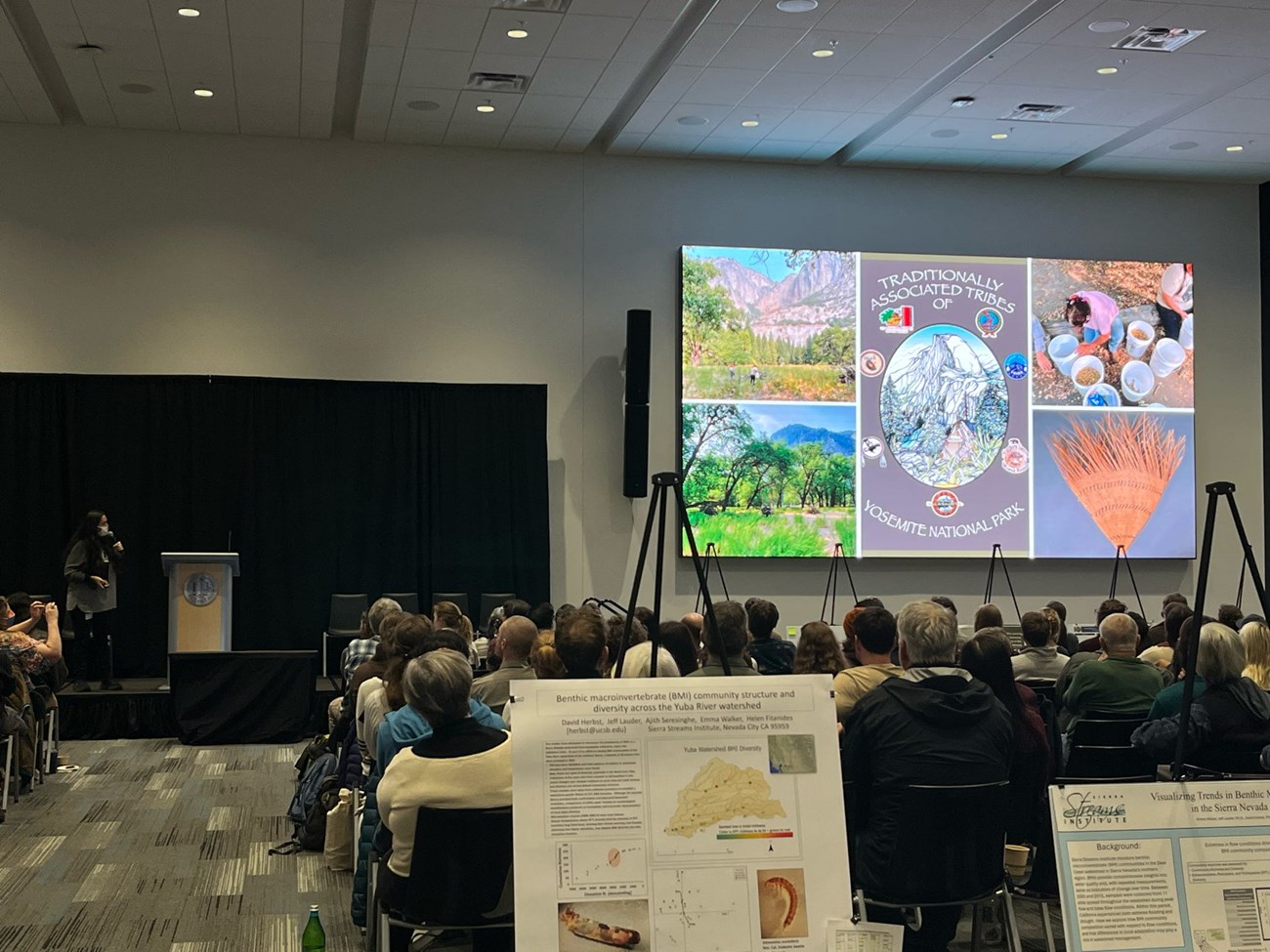
NPS / Sheri Shiflett
Sierra Nevada Network staff co-hosted and participated in the Sierra Nevada Science Symposium at the University of California–Merced on March 5–6. Symposium organizers aimed to CELEBRATE the strong relationships between land managers, scientists, and the research community; COMMUNICATE recent research results and current resource issues in the parks; CONSIDER the future of park research, management, and co-stewardship.
SIEN Physical Scientist Andi Heard presented a talk, Divergent Responses of Western Mountain Lakes to Increasing Nutrients and Temperature, a poster, Species Inventories: Informing Management in Sierra Nevada Network Parks. IMD Inventory Program Lead Tracy Valerius visited SIEN parks and presented a poster, Species Inventory Program Implementation in National Parks. Additional talks about SIEN projects were presented by John Battles, of UC–Berkeley (Threats to the Persistence of Sugar Pine), and Bob Wilkerson, of The Institute of Bird Populations (Avian Response to Climate and Fire History in National Parks of the Sierra Nevada).
Sierra Nevada Network staff participated on the symposium planning team with staff from Sequoia & Kings Canyon and Yosemite national parks, the USGS Sequoia–Kings Canyon Field Station, and the UC–Merced Sierra Nevada Research Institute. The symposium was attended by about 240 people, and presentations included one plenary talk, three keynotes, 20 invited talks, 40 lightning talks, and 48 posters. Thank you to UC–Merced for hosting the symposium web page.

Photo courtesy of Nate Stephenson
White-lined Sphinx Moths Benefit from Abundant Wildflowers
Please see this web article describing the abundance of white-lined sphinx moths during 2023 in the Sierra Nevada and elsewhere, accompanying spectacular wildflower blooms that followed a winter of atmospheric rivers and record precipitation in California.Publications and Reports
The following report was a product of the recent inventory for bats and owls at Devils Postpile National Monument funded through the Inventory & Monitoring Division.
Blakey, R, M. Buhler, L. Young, B. Wilkerson, and R. B. Siegel. 2023. Inventory surveys for bats and California spotted owls at Devils Postpile National Monument: Final report. Natural Resource Report NPS/DEPO/NRR—2023/2575. National Park Service, Fort Collins, Colorado.
Foster, D. E., S. S. Stephens, P. de Valpine, and J. J. Battles. 2024. Threats to the persistence of sugar pine (Pinus lambertiana) in the western USA. Forest Ecology and Management 554 (121693).
Heard, A. 2023. Sierra Nevada Network High-Elevation Lakes Monitoring Water Quality Dataset 2008 - 2020. National Park Service, Fort Collins, Colorado. Access via the Water Quality Portal. There is also a direct link for dataset download.
Ward, K.L. 2023. Sierra Nevada Network white pine monitoring: 2022 annual report. Natural Resource Data Series NPS/SIEN/NRDS—2023/1402. National Park Service, Fort Collins, Colorado.
Ward, K.L. 2024. Sierra Nevada Network high elevation white pine monitoring: 2021 annual report. Natural Resource Data Series NPS/SIEN/NRDS—2024/1405. National Park Service, Fort Collins, Colorado.
